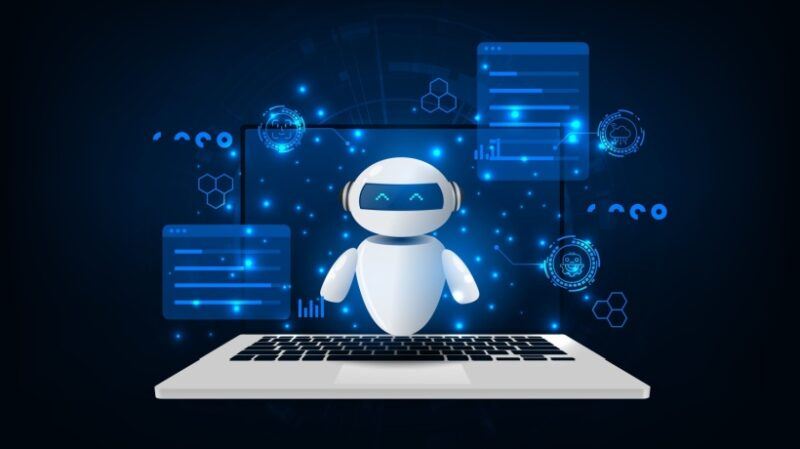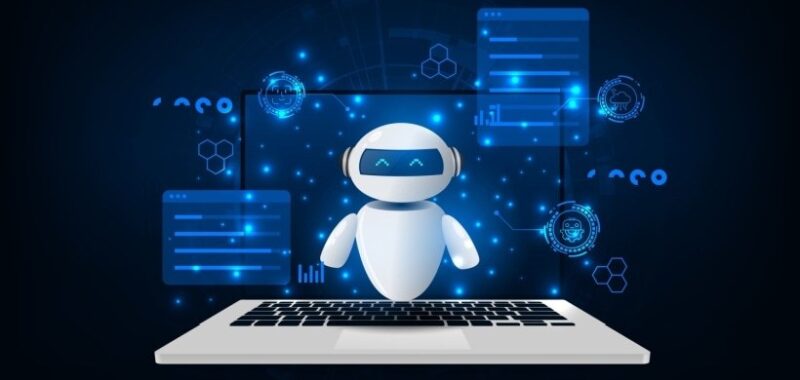
How AI Workflow Builders Are Reshaping L&D
The world of Learning and Development (L&D) is undergoing a monumental shift in 2025. For years, automation helped streamline repetitive processes and optimize administrative tasks. But today, we’re seeing something even more transformative: the rise of Artificial Intelligence (AI) and visual workflow builders enabling autonomous learning ecosystems. This shift is not just about doing tasks faster— it’s about creating intelligent systems that think, adapt, and act independently to empower employees and elevate organizational learning.
In this article, you’ll find…
The Journey From Automation To Autonomy
Automation in L&D has long played a critical role—from scheduling training sessions and sending reminders to tracking completions and generating reports. These systems were rule-based and reactive, designed to follow predefined steps. But they lacked one crucial trait: adaptability.
Enter AI-driven workflow builders. These systems do more than follow rules; they understand context, make decisions, and evolve over time. Where automation reduced manual workload, autonomy in workflows is transforming how learning is delivered, experienced, and optimized across entire organizations.
What Are AI Workflow Builders?
AI workflow builders are intelligent, no-code platforms designed to help Learning and Development teams to create dynamic, adaptive learning processes without requiring programming skills. Unlike traditional workflow tools that follow static, rule-based sequences, these builders leverage Artificial Intelligence to understand context, interpret user behavior, and make decisions in real time.
At their core, AI workflow builders integrate technologies like Machine Learning, Natural Language Processing (NLP), and data analytics. This allows them to go beyond mere automation. They continuously learn from user interactions, identify patterns, and optimize the flow of learning content to match individual needs and business goals.
For example, an AI workflow builder can analyze an employee’s role, prior training history, recent performance reviews, and even work activity data to craft a personalized learning path. As the employee progresses, the system adapts—suggesting new resources, changing formats (like videos or microlearning modules), or triggering assessments based on real-time performance.
These platforms often come with drag-and-drop interfaces and prebuilt AI models, making them accessible to nontechnical users. Their power lies not only in execution but in evolution—enabling L&D teams to build intelligent learning ecosystems that are responsive, scalable, and aligned with modern workplace dynamics.
Why Autonomy Matters In L&D
In a business environment defined by rapid change, autonomy is the key to agility. Traditional learning programs often lag behind evolving skills needs. Human-led updates to courseware or learning tracks may take weeks, even months. But autonomous AI workflows can make decisions on the fly—modifying learning plans, suggesting just-in-time microlearning, or reassigning assessments based on real-time performance data. This agility transforms L&D from a static, schedule-based function to a dynamic, responsive capability that supports ongoing reskilling and upskilling.
Key Ways AI Workflow Builders Are Redefining L&D
1. Intelligent Personalization At Scale
Every learner has unique strengths, gaps, and learning preferences. AI workflow builders analyze employee data—including job role, past training history, performance metrics, and engagement levels—to craft hyper-personalized learning journeys. Instead of assigning the same modules to every employee, these systems recommend content, adjust pacing, and alter formats (text, video, interactive simulations) based on how individuals learn best. What used to require extensive manual customization by L&D professionals can now be executed autonomously at scale, ensuring every learner receives a tailored experience.
2. Continuous Learning Loops
Autonomous workflows aren’t one-and-done. They’re designed to continuously learn from learner behavior and outcomes. If an employee struggles with a particular concept, the workflow can automatically trigger supplementary materials, a knowledge check, or a peer-mentoring session. These AI-driven loops ensure learning doesn’t end at module completion. Instead, it evolves based on real-world application, post-training performance, and changing business priorities.
3. Proactive Skill Gap Detection And Response
AI workflow builders can scan data from various systems—performance reviews, project management tools, sales dashboards, etc.—to detect early signs of skills gaps. Once identified, the system autonomously initiates interventions, such as recommending a course, assigning a mentor, or creating a custom upskilling plan. This proactive approach prevents performance issues before they arise and ensures that teams are future-ready, not just reactive.
4. Adaptive Assessment Workflows
Traditional assessments offer limited insights. They’re often designed as static tests that fail to account for individual nuances or changing job demands. AI workflow builders can create adaptive assessments that evolve based on how learners respond in real time. For example, if a learner answers a question correctly, the system can increase difficulty. If they struggle, it may revisit foundational concepts. These dynamic assessments not only test knowledge more effectively but also teach while assessing, creating a feedback-rich loop.
5. Seamless Integration Into The Flow Of Work
Autonomous learning workflows can integrate directly into existing work environments, such as project management tools, communication platforms, or CRM systems. This means learning opportunities are presented contextually—not in a separate LMS or learning portal—but at the moment they’re most relevant.
For example, if an employee is working on a new type of project, the system may trigger a short learning module or a “how-to” guide relevant to that task, right within their work interface. This just-in-time approach embeds learning into daily operations, enhancing knowledge retention and application.
6. Real-Time Data-Driven Decision Making
Traditional L&D reporting is retrospective. AI workflow builders offer real-time dashboards that monitor learner progress, content engagement, skill development, and more. This enables immediate decision-making—whether it’s to revise a course, reassign a learning path, or flag employees needing support.
More importantly, the system itself can act on this data, making autonomous decisions without waiting for human intervention. That’s the essence of autonomy: systems that self-optimize based on the data they generate and consume.
7. Democratizing Content Creation And Program Design
AI workflow builders often come with intuitive interfaces that allow nontechnical L&D teams—and even line managers—to design intelligent workflows. This democratization means learning programs can be created, launched, and refined by those closest to the skills in demand, without needing developers or data scientists. The shift from centralized to decentralized L&D creation enables organizations to move faster and stay aligned with on-the-ground needs.
The Cultural Shift Toward Trusting Autonomy
Adopting autonomous AI workflows isn’t just a technical evolution—it’s a cultural one. Organizations must learn to trust systems to make decisions traditionally reserved for humans. This requires transparency in how AI decisions are made, ethical frameworks to prevent bias, and ongoing human oversight.
But as systems prove their value—improving learning outcomes, reducing administrative burdens, and enhancing agility—trust naturally builds. In 2025, forward-thinking organizations are not replacing L&D professionals with AI, but empowering them to become strategic orchestrators of autonomous ecosystems.
Challenges And Considerations
While the benefits are significant, there are real challenges to navigating this shift:
- Data quality
AI workflows are only as good as the data they’re trained on. Poor or incomplete data can lead to ineffective or biased recommendations. - Change management
Teams may resist new autonomous processes, especially if they feel control is being taken away. Communicating the “why” behind the transition is essential. - Governance
Autonomous systems require clear boundaries. What decisions should be fully autonomous, and which should require human sign-off? Defining these thresholds prevents unintended consequences. - Upskilling L&D teams
L&D professionals need new skills to thrive in this environment—including data literacy, AI ethics, and workflow thinking.
Despite these challenges, the direction is clear: autonomy is the future of L&D, and organizations that embrace it now will be better positioned to adapt, compete, and grow.
The Human-AI Partnership In L&D
Autonomous workflows don’t remove the need for human insight—they amplify it. In fact, the most effective L&D strategies in 2025 are those that balance AI-driven automation with human empathy, creativity, and oversight.
Imagine an L&D team that no longer spends hours building reports or manually assigning training. Instead, they spend that time analyzing trends, mentoring employees, aligning learning goals with business strategy, and fostering a culture of continuous improvement. AI handles the execution; humans provide the vision.
Looking Ahead: L&D As A Self-Optimizing System
By the end of 2025, we will likely see L&D departments functioning more like living systems—capable of sensing changes in the organization, responding autonomously, and evolving without constant human intervention. This self-optimizing nature is the ultimate goal of AI workflow builders.
Learning becomes embedded in every workflow, aligned with every role, and responsive to every challenge. It’s no longer a side activity but an ever-present, intelligent companion in every employee’s journey.
Final Thoughts
The transition from automation to autonomy in Learning and Development is not just a technological shift—it’s a philosophical one. It’s about trusting machines to do more than assist—to analyze, adapt, and act. It’s about freeing up human potential to focus on what we do best: mentoring, guiding, innovating, and creating cultures of lifelong learning.
In 2025, AI workflow builders are not just tools. They are architects of intelligent, responsive, and empowering learning experiences. The organizations that recognize and harness this power will not just train better—they’ll evolve faster.

